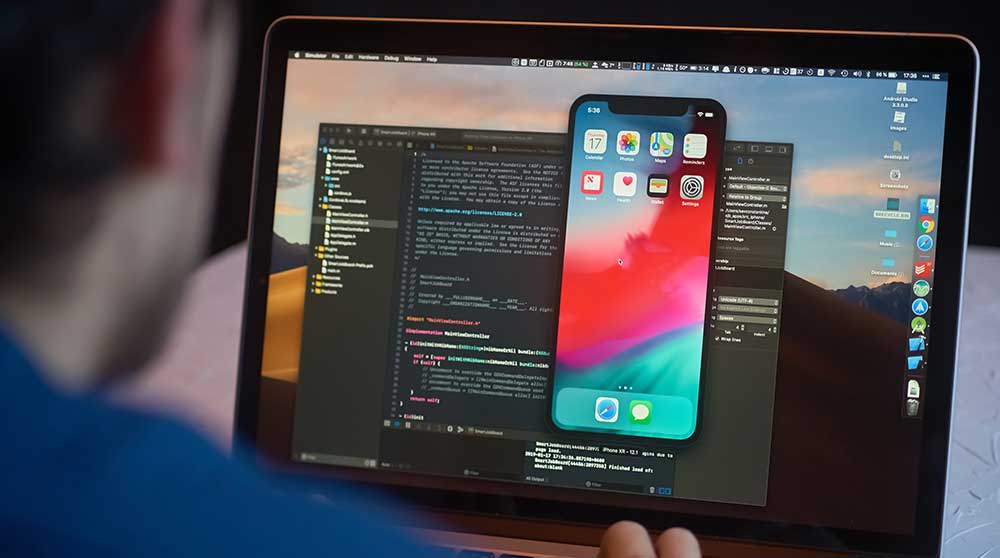In the cutthroat industry of portable application improvement, execution streamlining of versatile applications has arisen as a central issue. The progress of a portable application is ordinarily estimated by how well it meets client assumptions for responsiveness, reliability, and speed. Clients today are eager with slow or untrustworthy applications. Application execution improvement is basic for progress since purchasers need a smooth and proficient experience.
We will explore the nuances of app performance optimization in this blog in order to improve speed, stability, and responsiveness. We'll talk about the expectations consumers have while using mobile applications and examine important indicators that are essential for gauging performance. The importance of mobile app development companies in accomplishing these performance objectives will be emphasized throughout this talk, along with the knowledge and techniques needed to produce high-performing mobile apps.
I. Understanding App Performance
A. Key Metrics (Speed, Stability, Responsiveness)
1. Speed: Speed is a fundamental aspect of app performance. Users expect apps to launch quickly, load content promptly, and respond to their actions without delay. Slow-loading screens and laggy interactions can lead to user frustration and abandonment. We'll explore techniques employed by mobile app development companies to optimize app speed, such as efficient coding practices, minimizing resource usage, and utilizing content delivery networks (CDNs).
2. Stability: App stability refers to the app's ability to operate reliably without crashes or unexpected shutdowns. Users want apps that work seamlessly, without disruptions. We'll delve into strategies like thorough testing, error monitoring, and crash reporting that mobile app development companies employ to ensure app stability.
3. Responsiveness: Responsiveness entails how quickly an app reacts to user input. Users expect immediate feedback when they tap buttons or perform actions within the app. Achieving this requires optimizing both the user interface and the backend processes. We'll discuss techniques like asynchronous programming, thread management, and efficient UI design to enhance app responsiveness.
B. User Expectations
For an app to work at its best, it is essential to comprehend user expectations. Users seek for programs that satisfy their demands while also being enjoyable to use. We'll look at the methods used by mobile app development businesses to do user research, collect feedback, and employ analytics to make sure their app performs as expected by users. Meeting and exceeding these demands can enhance user retention and result in favorable ratings, which will help the app succeed.
We will underline the crucial part that a mobile app development business plays in obtaining top-tier app performance throughout this article. These businesses are essential to producing mobile applications that excel in speed, stability, and responsiveness because they apply industry best practices, keep up with technical developments, and prioritize user-centric development.
II. Identifying Performance Issues
A. Profiling and Monitoring
Identification of performance issues in a mobile app requires doing the crucial actions of profiling and monitoring. To assess an app's activity, mobile app development businesses use a variety of technologies and methodologies. While monitoring keeps track of program performance in real-time, profiling entails gathering statistics on resource usage, such as CPU and memory. These procedures assist in identifying areas that require improvement, enabling developers to concentrate on particular performance bottlenecks.
B. Common Bottlenecks
Identifying common bottlenecks is crucial for addressing performance issues effectively. Mobile app development companies often encounter bottlenecks in areas like inefficient code, excessive resource usage, or poorly optimized algorithms. We'll explore these common issues and discuss how they can impact app performance, making it imperative to address them during the development process.
C. User Feedback
User input is essential for spotting performance problems that may not be immediately obvious from monitoring and profiling alone. Companies that create mobile apps encourage users to report issues and offer feedback. This useful information can draw attention to problems with responsiveness, stability, or speed that users run into in practical situations. The overall performance of the app may be improved by the developers by actively listening to user input and revising their optimization tactics.
IV. Speed Optimization
A. Code Efficiency
Efficient coding practices are at the core of speed optimization. Mobile app development companies prioritize writing clean, optimized code to minimize resource consumption. We'll delve into techniques such as code refactoring, eliminating redundant processes, and choosing the right data structures to improve code efficiency and accelerate app performance.
B. Network Optimization
Optimizing network communication is crucial, especially for apps that rely on server interactions. Mobile app development companies optimize network requests by implementing techniques like data compression, minimizing unnecessary data transfers, and using asynchronous operations. These strategies not only reduce data usage but also enhance the app's responsiveness by minimizing network-related delays.
C. Caching Strategies
Caching is a powerful technique used to improve app speed by storing frequently accessed data locally. Mobile app development companies employ various caching strategies, such as in-memory caching and disk caching, to reduce the need for repeated network requests. We'll explore how caching can significantly enhance app performance and responsiveness, particularly for content-heavy applications.
V. Stability Enhancement
A. Crash Reporting and Analysis
Crash reporting and analysis are vital for stability enhancement. Mobile app development companies integrate crash reporting tools to collect data on app crashes and errors. This data helps developers identify the root causes of crashes, prioritize critical issues, and implement solutions. By proactively addressing crashes, app stability is significantly improved, resulting in a better user experience.
B. Memory Management
To avoid memory leaks and program crashes brought on by excessive memory utilization, effective memory management is crucial. To improve memory utilization, mobile app development businesses employ methods such as automated reference counting (ARC), effective memory allocation, and memory profiling. Effective memory management improves stability and boosts overall performance.
C. Error Handling
Comprehensive error handling strategies are crucial for preventing app crashes and unexpected behavior. Mobile app development companies implement robust error handling mechanisms to gracefully handle unexpected situations. We'll discuss how error handling can improve the app's stability by preventing crashes and providing users with informative error messages.
By addressing performance issues and implementing these optimization strategies, mobile app development companies contribute to App Store optimization. Apps that offer superior speed, stability, and responsiveness are more likely to receive positive user reviews, higher ratings, and increased visibility in app stores, ultimately leading to greater success in the competitive mobile app landscape.
V. Responsiveness Improvement
A. UI/UX Considerations
Responsiveness is an important factor in enhancing app performance. Users want apps to respond promptly to their input, resulting in a seamless experience. To do this, the app's user interface (UI) and user experience (UX) must be carefully studied. Mobile app development companies pay great attention to UI/UX design to ensure that user interfaces are clear and interactions flow seamlessly. This user-centric method increases responsiveness while also increasing user delight.
B. Asynchronous Programming
Mobile app development businesses employ the core method of asynchronous programming to increase the responsiveness of their apps. The primary user interface thread is still available to react quickly to user input since time-consuming activities have been delegated to background threads. By doing this, you can stop resource-intensive processes from making the app unusable or freeze. We'll look at how asynchronous programming strategies, such multithreading and asynchronous APIs, are used to keep the user interface dynamic and fluid.
C. Background Tasks
An app's responsiveness while carrying out numerous activities depends heavily on background tasks. Mobile app development businesses carefully control background processes so that the app may keep gathering updates or processing data without interfering with the user's use of the forefront interface.
VI. Testing and Quality Control
A. Performance Testing
During the critical performance testing stage of the app development process, app performance is assessed and enhanced. Mobile app development companies employ several testing methodologies to determine how well the app meets criteria for speed, stability, and responsiveness. Execution testing incorporates benchmarking, load testing, and stress testing, all of which endeavor to distinguish execution bottlenecks and upgrade the application's exhibition. Exhaustive execution testing is expected to guarantee that the application offers clients with a steady and responsive experience.
B. Real-World Scenario Testing
Real-world scenario testing goes beyond benchmarking and simulates actual user interactions with the app. Mobile app development companies subject their apps to a variety of real-world scenarios, considering factors like varying network conditions, device types, and user behavior. This type of testing helps uncover performance issues that might not be evident in controlled environments, ensuring that the app remains responsive under diverse circumstances.
C. Regression Testing
Regression testing is a continuous process that guarantees app performance is maintained at its highest level after each update or code modification. Regression tests are frequently performed by mobile app development businesses to ensure that updated features or bug patches don't negatively affect the app's responsiveness, stability, or performance. This proactive strategy assists in maintaining constant performance levels and prevents the development of new problems that can impair the user experience.
VII. Continuous Improvement
A. Monitoring Tools
A key component of improving app performance is continuous improvement. Mobile app development businesses use cutting-edge monitoring technologies to do this. These technologies give developers in-the-moment insights into how an app behaves, assisting them in spotting performance problems as they appear. To guarantee that the app constantly satisfies user expectations, metrics relating to speed, stability, and responsiveness are regularly watched. Development teams may proactively resolve performance issues and optimize the performance of the app by regularly deploying monitoring tools.
B. Feedback Loops
For an app's performance to be continuously improved, feedback loops are crucial. Companies that create mobile apps urge customers to give feedback so they may get important information about actual usage scenarios. Performance problems that might not have been seen during development and testing are frequently discovered via user feedback. The performance of the app is then further improved using these insights, starting a positive feedback loop.
C. Agile Development Practices
Agile development practices are integral to the iterative process of optimizing app performance. Mobile app development companies embrace Agile methodologies to maintain flexibility and responsiveness throughout the development lifecycle. Agile practices, such as sprint-based development and regular retrospectives, allow teams to adapt quickly to changing performance requirements. This iterative approach ensures that app performance remains a top priority and continually evolves to meet user expectations.
Recap of Key Takeaways
In conclusion, improving speed, stability, and responsiveness are all important components of maximizing app performance. By employing tactics like effective coding, comprehensive testing, and continual improvement, mobile app development businesses play a significant part in accomplishing these objectives. The significance of monitoring tools, feedback loops, and Agile techniques in the quest of performance excellence are some key conclusions from this investigation.
In the competitive mobile app market of today, a mobile app's performance is a make-or-break aspect. Users need responsive, dependable, and quick apps. Performance-focused mobile app development businesses not only improve user happiness but also boost their chances of success throughout the App Store optimization process. Companies may develop a competitive edge and a devoted user base by regularly offering high-performance apps.






























